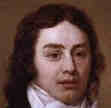Births which
occurred on a 25 July:
2001 María
de Jesús and María Teresa Quiej Alvarez, born to
Leticia Alba Alvarez, in Mazatenango, departamento de Suchitepéquez,
Guatemala, conjoined at the top of their heads which face in different directions
(“craniopagus twins”). Sponsored by Healing the Children, they
would arrive at UCLA's Mattel Children's Hospital in Los Angeles on 07 June
2002 and be surgically separated on 06 August 2002 after a 23-hour operation.
María Teresa would need several follow-up operations, including some
to place a valve in her skull to relieve pressure of fluid on her brain.
As late as 15 April 2003 the latest valve would have to be removed because
it had become infected, and on 02 May 2003 it would be replaced by a new
one in a 3-hour operation in Guatemala City. The twins are the first children
born to Wenceslao Quiej and Alba Leticia Alvarez. Their mother indicates
that she experienced a normal pregnancy, but, as many women in rural areas,
did not receive any prenatal care. During her eight days of labor, Mrs.
Alvarez was initially attended at home by a midwife, but when the midwife
realized it was a complicated delivery, she referred the family to a private
clinic in their area. When clinic staff realized the mother was having twins,
they performed a C-section. Much to everyone’s surprise, they saw that the
babies were fused at the top of their heads. At birth, the twins weighed
2 kg. Because of the babies’ condition, the clinic transferred them to Guatemala’s
Social Security hospital. The girls lived there until they were brought
to UCLA. Healing The Children, a nonprofit group that helps find medical
care for children in underdeveloped countries, approached Dr. Jorge Lazareff,
one of its volunteer neurosurgeons, for help in accepting the twins’ cases.
Led by Lazareff and UCLA plastic-reconstructive surgeon Dr. Henry Kawamoto
Jr., a UCLA physician team is donating its services to the twins’ care.
Still, nursing, hospitalization and additional medical expenses are expected
to cost the hospital upwards of $1.5 million.
1978 Louise
Joy Brown, the first "test-tube baby," in Oldham, England; she'd
been conceived through the technique of in-vitro fertilization.
1957
Ray Billingsley, cartoonist ("Curtis").
1945 Kaiser-Frazer automobile
company ^top^
Henry Kaiser and Joseph Frazer
announced plans to form a corporation to manufacture automobiles on
this day in 1945. The two men formed an unlikely pair. Kaiser, raised
in modest circumstances, was a true American self-made man. By 1945,
he sat atop an empire of shipbuilding, cement, steel, and other basic
building businesses, and had amassed a considerable fortune. His company’s
shipbuilding feats had made him a media favorite during World War
II, with reporters labeling him “the Miracle Man.”
By contrast, Frazer was a direct descendant of Martha Washington,
and he’d attended Hotchkiss and Yale. Frazer never finished his studies
at Yale, opting to take a manual labor job at Packard. At Packard
he rose steadily through the management structure, becoming by the
mid-1940s a solid, respectable executive.
The two men first encountered one another when in 1942 Kaiser urged
car companies to plan ahead for post-war production; Frazer answered
on behalf of Packard, labeling the suggestion “half-baked” and “stupid.”
The men met again in 1945 in San Francisco and two weeks later Kaiser-Frazer
was born. With Frazer’s contacts in the auto industry, and Kaiser’s
capital and experience with huge government contracts, the two men
were optimistic about their chances. In addition, labor groups were
encouraging competition to the Big Three and had announced a willingness
to cooperate with any new entries into Detroit.
Kaiser and Frazer had to generate enough capital to acquire and build
full production facilities. They had to find reliable sources for
raw materials and negotiate labor contracts, and they had to do it
all before the Big Three could convert back from wartime production
if they were to have a chance a surviving. Amazingly, they pulled
it off, leasing the Ford Willow Run Plant and producing 11'000 cars
in 1946. Unfortunately, their financiers gave them trouble: while
losses were anticipated during their first year, the two men didn’t
expect to be punished so severely by squeamish investors. The company
lost $19 million and their stock plummeted.
A year later, however, Willow Run produced 100'000 cars and Kaiser-Frazer
recorded $19 million in profit. Success was within their grasp, and
the next year they made $10 million — but the downturn in profits
and the impending release of Big Three post-war models caused the
company’s stock to slip. Without money Kaiser-Frazer couldn’t afford
to come up with new models, and consumers turned away from them. In
1949 the company lost $30 million and was poised to endure the fate
of so many other independents after the war.
The differences between the two partners manifested themselves during
the bad times, and management failed to respond positively to the
difficulties. Frazer left the business and Kaiser presided until 1953
when he sold out to Willys-Overland. Ironically, in Kaiser’s last
year the company turned out a few remarkable cars including, arguably,
America’s first compact car. |
1935 Adnan Khashoggi billionaire/arms dealer
1924
Luis Suárez Fernández, historiador español.
1906
Manuel Diez Alegría, militar español.
1905 Elías
Canetti, escritor búlgaro, nacionalizado británico.
1902 Eric Hoffer longshoreman, philosopher, author (True Believer,
In Our Time)
1889 Ubaldo Oppi, Italian artist
who died in 1946.
1880 Morris Raphel Cohen, American
philosopher and mathematician.
1874 Joaquín Torres-García,
Uruguayan painter and sculptor who died on 08 August 1949. — LINKS
1871 Arturo Tosi, Italian artist who died on 03 January
1956. [¿Tosi Catarro?]
1870 Maxfield Parrish,
US Golden
Age illustrator who died in 1966. He studied under the great Brandywine
illustrator Howard
Pyle. — MORE
ON PARRISH AT ART “4” JULY
— LINKS
— Man
with Apple (cover design for Collier's Weekly, 01 April 1911) —
The
Arithmetic Lesson (cover design for Collier's Weekly, 30 Sep 1911) —
The
Idiot (Cover design for Collier's Weekly, 24 Sep 1910) — From
the Story of Snow White
1857 Francis Coates Jones,
US painter who died in 1932. — Woman
in White — Woman
Reading (Morning)
1848 Arthur James Balfour,
prime Minister of Great Britain, 1902-1905 — Arthur Balfour, estadista
conservador inglés.
1844 Thomas
Couperthwaite Eakins, in Philadelphia. — Philadelphia Realist
painter, photographer, teacher. —
MORE
ON EAKINS AT ART “4” JULY —
LINKS
— Walt
Whitman — Self~Portrait
— The Gross Clinic
— Starting Out After Rail
— Baby at Play
— Concert Singer
— The Pathetic Song
— Max Schmidt in a Single Scull
— The Swimming Hole
— Miss Van Buren
— Study
"Negress" — Frank
Jay St. John — Professor
William Woolsey Johnson — The
Courtship
1822 Santiago Arcos Arlegui,
político chileno.
1808 Listing,
mathematician who wrote one of the earliest texts on Topology.
1781
Merry-Joseph Blondel, French painter who died on 12 June 1853.
— more —
LINKS
— La
Mort de Louis XII Surnommé le Père du Peuple [ce que l'histoire ne dit
pas c'est combien de “Mères du Peuple” ont collaboré
à lui mériter ce surnom. En tout cas, ni elle(s) ni le peuple
ne sont présents dans ce tableau.]
1752 Alexandre Jean
Noël, French artist who died in January 1834.
1628
Nicolas-Claes-Franszoon Hals, Dutch artist who died on 17 July
1686.
1512 Diego de Covarrubias, teólogo español.
|
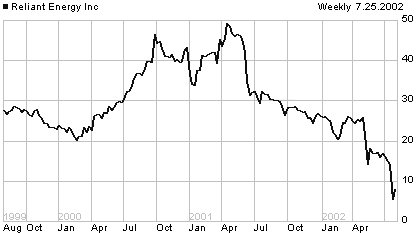 On
a 25 July:
On
a 25 July: 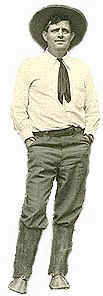 1897
1897
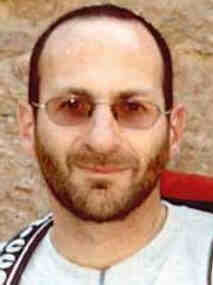 Deaths
Deaths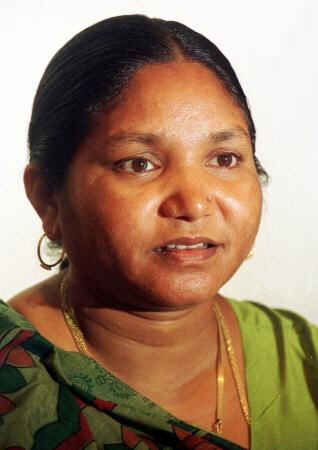
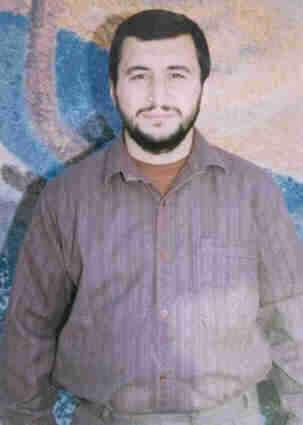 After her release, Devi sought to take her fight for justice for the poor
into government. She became a member of Parliament in 1996, winning with
a wide margin, thanks mostly to the support of women and the poor.
After her release, Devi sought to take her fight for justice for the poor
into government. She became a member of Parliament in 1996, winning with
a wide margin, thanks mostly to the support of women and the poor. 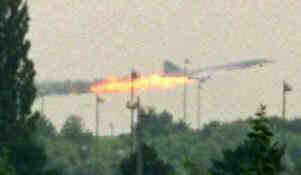 2000:
113 people in the first Concorde crash.
2000:
113 people in the first Concorde crash.
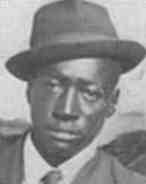 1946
George Dorsey, 28; his wife Mae Murray Dorsey,
23; his sister Dorothy (Dorsey) Malcolm, 20; and her husband
Roger Malcolm, 24; Blacks, shot with shotguns and pistols more
than 60 times by 12 to 15 White men at the Moore's Ford bridge over the
Apalachee River, 100 km east of Atlanta, Georgia. This enraged US President
Harry Truman and led to anti-lynching legislation and to the desegregation
of the US military. But no one was ever brought to justice for this the
last mass lynching in the US. While drunk, Roger Malcolm [photo >]
had on 14 July 1946 stabbed his White landlord's son, Barnette Hester, 29,
been jailed in Monroe and then, became clear that Hester would survive the
seemingly fatal wound, freed on bond on 25 July to await trial; the four
were driving home when they were assaulted. George Dorsey was a World War
II veteran, who had returned to civilian life nine months earlier.
1946
George Dorsey, 28; his wife Mae Murray Dorsey,
23; his sister Dorothy (Dorsey) Malcolm, 20; and her husband
Roger Malcolm, 24; Blacks, shot with shotguns and pistols more
than 60 times by 12 to 15 White men at the Moore's Ford bridge over the
Apalachee River, 100 km east of Atlanta, Georgia. This enraged US President
Harry Truman and led to anti-lynching legislation and to the desegregation
of the US military. But no one was ever brought to justice for this the
last mass lynching in the US. While drunk, Roger Malcolm [photo >]
had on 14 July 1946 stabbed his White landlord's son, Barnette Hester, 29,
been jailed in Monroe and then, became clear that Hester would survive the
seemingly fatal wound, freed on bond on 25 July to await trial; the four
were driving home when they were assaulted. George Dorsey was a World War
II veteran, who had returned to civilian life nine months earlier.